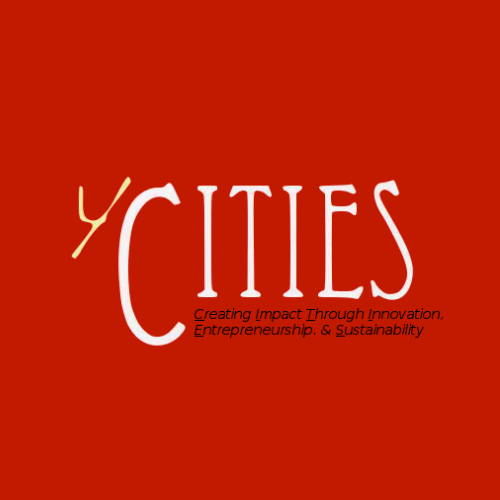Every Wednesday night, Sanibel knows that I can’t pick her up from school at 6pm because I’ll be teaching. She’s bummed, but understands that I’ll be home to tuck her in (our kids don’t go to bed very early). Last week, however, she was excited because I was bringing her with me to class. She told all her teachers in school that day that I’d be picking her up early so she could go to “Mama’s work”. Dean, my 8 year old, didn’t want to be left out, so he came too. So Aidan (oldest brother, who’s also participating in the L3 Innovation Challenge), Dean, Sophia (a student I give a ride to/from class each week), and I went to Sanibel’s school to pick her up, and bring her to Cambridge.
When we arrived, Sanibel walked into #LabCentral (a biotech-capable share lab facility) without missing a beat, as if she totally belonged there. The room full of middle and high school students didn’t intimidate her at all (I’m not surprised)…the students were in awe of this adorable mini-bosslady, and could not wait to interact with her.
Oh yes, Sanibel is very cute – and every student was eager to interact with her. But they soon found out that she is a little human being, with a mind of her own, and does things differently than expected. Human nature, human habits, human error. The student teams each had a few minutes to interact with her, setting up simulated environments, and testing their low-fidelity prototypes. Round 1 went something like this:
“Sanibel, here, read this paragraph”. Ummm…Sanibel is in Pre-K. While some kids may be reading before reaching kindergarten, it is age-appropriate for Sanibel to not be reading yet. Right…so the framework and goals of the testing scenario needs to be re-calibrated.
“Oh, if only Sanibel could only understand how to follow these instructions, it would be so much easier to make our solution work for her”. Well, there’s no solution yet. There is a portion of technology that works, and it is starting to address the visual impairment. But it’s not a solution yet because the usability is supposed to be designed so that the intended user can use it. And the user is 4 years old.
“Sanibel, do this…no, no, don’t keep touching that button…do this”. Hmmm…is this just an annoyance, or is this is a clue in how it should be designed (or not designed)…
“Huh, Sanibel breezed through our simulated problem scenario without a problem…” Mentors suggested changing elements of the scenario. I can feel the resistance…the disbelief that assumptions can be invalidated. But invalidation of a hypothesis can be just as important as one that is validated.
From being a tech entrepreneur and angel investor for so long, I think the discovery process can be a challenging and humbling process. Sometimes, we find out that we have a “solution” that’s still looking for the right problem to solve. Other times, we realize that our “solution” isn’t a solution for THIS user, but rather, for THAT user. The key is to recognize that early on, and to adapt based on – and within – the given constraints. In some cases, you can change your user demographic to reflect the new-found discovery. In some cases (like this one), usable by my 4 year old is one of the design-constraints that cannot be shifted.
However frustrating it can be, I’m a big fan of prototyping early…even when you’re not sure which direction you’re going. Prototype to help draw out thoughts into tangible form…to germinate an idea…to communicate to your teammates what you’re thinking…to clarify to yourself and de-clutter your mind…to formulate your next plan of action. Yes, it can be messy. It can feel like Bambi learning to walk. But the first step leads to the second step, which leads to the next. There could be a stumble, or what feels like a “failure”. But every step and stumble leads to clarity and sure-footedness.
The student teams had 2 rounds of interaction with Sanibel, with a large group reflection/discussion sandwiched in between. I didn’t get to see all of the interactions, or hear all of the discussions, as I had to put on my mom hat many times…like when I was in the middle of talking to the class, and Sanibel runs up to me doing the pee pee dance. Luckily, the fantastic mentors and instructors seamlessly took over (Andrew’s reflections can be found here: https://youthcities.org/l3-class-5-testing-4-year-old-user-vicky-wu-davis/ ).
But when class was wrapping up, a lot of students excitedly came over to me to share their updates. The messiness that came with Round 1 of interacting with Sanibel, forced the students to “do”, instead of just talk. Brainstorming is great…but it can sometimes be paralyzing, because there’s always that feeling of “oh, we’re not ready…let’s talk some more”. The “so-prepared-but-didn’t-go-according-to-plan” of Round 1 helped clarify what type of preparation they actually needed to do (same goes for the slightly-unprepared). Between their own experiences and listening to those of their peers, by the time Round 2 came around, the teams had a much better idea of what they wanted to test…how to test it…how to have a couple of back-up testing methodologies if Sanibel took them by surprise…what data they wanted to bring home with them after class, etc. One of the teams that was less prepared (not because of lack of effort, but because of uncertainty), had some of the best results in Round 2. Sanibel used their “works-like” low-fidelity prototype with great success, and the team acknowledged that they needed Round 1’s “failure” to help them reach such success in Round 2.
Can’t wait for tonight’s class!!! I can’t believe it’s the last class tonight (Demo Day/judging next week!!!) The winning team will continue with the design process, with support from Boston Children’s Hospital and Bose Labs, so that Sanibel can test in her actual environments. I’ve got chills down my spine, and flutters in my heart.
